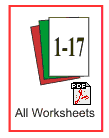- TOOL KITS
- A. The NEXT Step
- B. Promoting Independence
- C. Phone Apps
- D. Return to Work
- E. Motivational Interviewing
- F. Paediatric Brain Injury Rehabilitation Resources
- a) Introduction
- 0. Introduction
- 1. Working together promoting independence
- 2 . Using this kit
- b) Issues, goals, action
- 3. Identifying issues W
- 4. Setting goals W
- 5. Making goals happen W
- 6. Monitoring progress W
- c) Strategies Myself and my relationships
- 7. My behaviour's changed W
- 8. Thinking
- 9. Relationships W
- 10.Conversations
- Managing memory, money and time
- 11. Remembering information and messages
- 12. Finances and handling money W
- 13. Managing time W
- Household tasks
- 14. Food and shopping W
- 15. Food and meals W
- 16. House keeping
- 17. Laundry
- Getting around
- 18. Public transport W
- 19. Accessing the community
- Life tasks
- 20. Self care
- 21. Fitness
- 22. Leisure
- 23. Employment
- 24. Continue learning
- 25. Health and well-being
- Emergencies
- 26. Emergencies
2. Using the Toolkit
This Toolkit was written to provide background information to whoever is working with the individual who has a brain injury.
The aim of the Kit is to maximise the individual's abilities, their independence in performing daily activities and living life.
The steps for the worker in using the kit are:
A. Understand rehabilitation and everyone's roles
It is useful if everyone working together understands a) What rehabilitation is and b) each others roles in particular:
- The role of the person with the TBI - the individual
- The role of the rehabilitation team and its members
- The role of the family
- The role of the support worker.
See Section 1. Working Together promoting independence
B. Identify issues
The next step is to identify issues the individual wants to work on or areas they want to improve.
The more meaningful or relevant the issue or activity is to the individual the greater the chance of success. When trying to enable the individual to identify areas to work on ask questions.
For example, "What would you like to work on?" "What do you think stops you from doing what you want to?" Open ended questions provide the individual with the most control and helps independent decision making.
See Section 3. Identifying Issues
C. Set goals
The next step is to work with the person with the TBI to set goals.
D. Identify strategies, tips and how tos
See Sections 7 to 26 to identify strategies, tips and how tos
Print out any Sections that are relevant.
The print outs of Section 3 to 26 are designed for use by people with TBIs. They will print with larger fonts and without distracting menus.
If you want to print part of a page use the mouse to select the section you wish to print and choose "Selection" when printing.
E. Supporting the person with the TBI to make goals happen
Help the person with the TBI to stay organised and focused.
See Section 5 Making goals happen
F. Monitor Progress
See Section 6. Monitor progress
G. Use the worksheets where useful
Use the Worksheets.
There are 17 Worksheets that can be used by people with TBI.
Menus and tabs with a W indicate a Worksheet is included in the section.
They are available as PDF. Links to individual worksheets are in each Section where they are used. Here is a link to all 17 Worksheets.

